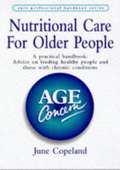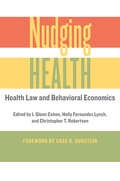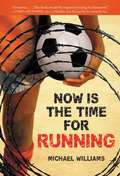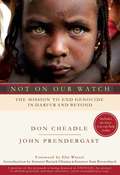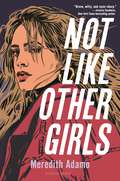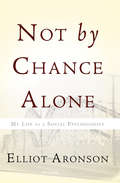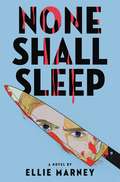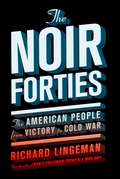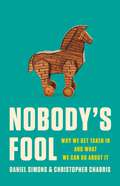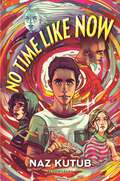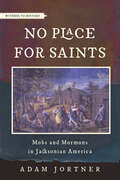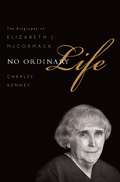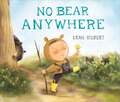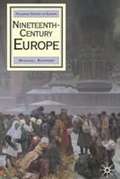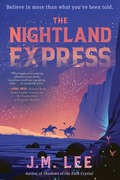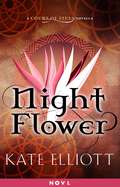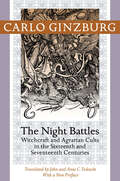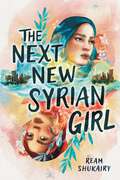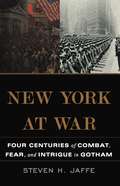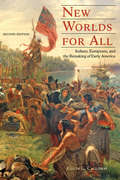- Table View
- List View
Nutritional Care for Older People, A Practical Handbook: Advice on Feeding Healthy People and Those with Chronic Conditions
by June CopemanFilled with information and practical advice, this book is designed to be used by care staff concerned with food and nutrition and older people. It uses the latest scientific knowledge and national guidelines.
Nutritional Care for Older People, A Practical Handbook: Advice on Feeding Healthy People and Those with Chronic Conditions (PDF)
by June CopemanFilled with information and practical advice, this book is designed to be used by care staff concerned with food and nutrition and older people. It uses the latest scientific knowledge and national guidelines.
Nudging Health: Health Law and Behavioral Economics
by I. Glenn Cohen Holly Fernandez Lynch Christopher T. Robertson Cass R. SunsteinBehavioral nudges are everywhere: calorie counts on menus, automated text reminders to encourage medication adherence, a reminder bell when a driver;€™s seatbelt isn;€™t fastened. Designed to help people make better health choices, these reminders have become so commonplace that they often go unnoticed. In Nudging Health, forty-five experts in behavioral science and health policy from across academia, government, and private industry come together to explore whether and how these tools are effective in improving health outcomes.Behavioral science has swept the fields of economics and law through the study of nudges, cognitive biases, and decisional heuristics;¢;‚¬;€?but it has only recently begun to impact the conversation on health care. Nudging Health wrestles with some of the thorny philosophical issues, legal limits, and conceptual questions raised by behavioral science as applied to health law and policy. The volume frames the fundamental issues surrounding health nudges by addressing ethical questions. Does cost-sharing for health expenditures cause patients to make poor decisions? Is it right to make it difficult for people to opt out of having their organs harvested for donation when they die? Are behavioral nudges paternalistic? The contributors examine specific applications of behavioral science, including efforts to address health care costs, improve vaccination rates, and encourage better decision-making by physicians. They wrestle with questions regarding the doctor-patient relationship and defaults in healthcare while engaging with larger, timely questions of healthcare reform.Nudging Health is the first multi-voiced assessment of behavioral economics and health law to span such a wide array of issues;¢;‚¬;€?from the Affordable Care Act to prescription drugs.Contributors: David A. Asch, Jerry Avorn, Jennifer Blumenthal-Barby, Alexander M. Capron, Niteesh K. Choudhry, I. Glenn Cohen, Sarah Conly, Gregory Curfman, Khaled El Emam, Barbara J. Evans, Nir Eyal, Andrea Freeman, Alan M. Garber, Jonathan Gingerich, Michael Hallsworth, Jim Hawkins, David Huffman, David A. Hyman, Julika Kaplan, Aaron S. Kesselheim, Nina A. Kohn, Russell Korobkin, Jeffrey T. Kullgren, Matthew J.B. Lawrence, George Loewenstein, Holly Fernandez Lynch, Ester Moher, Abigail R. Moncrieff, David Orentlicher, Manisha Padi, Christopher T. Robertson, Ameet Sarpatwari, Aditi P. Sen, Neel Shah, Zainab Shipchandler, Anna D. Sinaiko, Donna Spruijt-Metz, Cass R. Sunstein, Thomas S. Ulen, Kristen Underhill, Kevin G. Volpp, Mark D. White, David V. Yokum, Jennifer L. Zamzow, Richard J. Zeckhauser
Nudging Health: Health Law and Behavioral Economics
by I. Glenn Cohen Holly Fernandez Lynch Christopher T. Robertson Cass R. SunsteinBehavioral nudges are everywhere: calorie counts on menus, automated text reminders to encourage medication adherence, a reminder bell when a driver;€™s seatbelt isn;€™t fastened. Designed to help people make better health choices, these reminders have become so commonplace that they often go unnoticed. In Nudging Health, forty-five experts in behavioral science and health policy from across academia, government, and private industry come together to explore whether and how these tools are effective in improving health outcomes.Behavioral science has swept the fields of economics and law through the study of nudges, cognitive biases, and decisional heuristics;¢;‚¬;€?but it has only recently begun to impact the conversation on health care. Nudging Health wrestles with some of the thorny philosophical issues, legal limits, and conceptual questions raised by behavioral science as applied to health law and policy. The volume frames the fundamental issues surrounding health nudges by addressing ethical questions. Does cost-sharing for health expenditures cause patients to make poor decisions? Is it right to make it difficult for people to opt out of having their organs harvested for donation when they die? Are behavioral nudges paternalistic? The contributors examine specific applications of behavioral science, including efforts to address health care costs, improve vaccination rates, and encourage better decision-making by physicians. They wrestle with questions regarding the doctor-patient relationship and defaults in healthcare while engaging with larger, timely questions of healthcare reform.Nudging Health is the first multi-voiced assessment of behavioral economics and health law to span such a wide array of issues;¢;‚¬;€?from the Affordable Care Act to prescription drugs.Contributors: David A. Asch, Jerry Avorn, Jennifer Blumenthal-Barby, Alexander M. Capron, Niteesh K. Choudhry, I. Glenn Cohen, Sarah Conly, Gregory Curfman, Khaled El Emam, Barbara J. Evans, Nir Eyal, Andrea Freeman, Alan M. Garber, Jonathan Gingerich, Michael Hallsworth, Jim Hawkins, David Huffman, David A. Hyman, Julika Kaplan, Aaron S. Kesselheim, Nina A. Kohn, Russell Korobkin, Jeffrey T. Kullgren, Matthew J.B. Lawrence, George Loewenstein, Holly Fernandez Lynch, Ester Moher, Abigail R. Moncrieff, David Orentlicher, Manisha Padi, Christopher T. Robertson, Ameet Sarpatwari, Aditi P. Sen, Neel Shah, Zainab Shipchandler, Anna D. Sinaiko, Donna Spruijt-Metz, Cass R. Sunstein, Thomas S. Ulen, Kristen Underhill, Kevin G. Volpp, Mark D. White, David V. Yokum, Jennifer L. Zamzow, Richard J. Zeckhauser
Now Is the Time for Running
by Michael WilliamsJust down the road from their families, Deo and his friends play soccer in the dusty fields of Zimbabwe, cheered on by Deo's older brother, Innocent. It is a day like any other... until the soldiers arrive and Deo and Innocent are forced to run for their lives, fleeing the wreckage of their village for the distant promise of safe haven in South Africa. Along the way, they face the prejudice and poverty that greet refugees everywhere, but eventually Deo finds hope, joining dozens of other homeless, displaced teens on the World Cup Street Soccer team--a possible ticket out of extreme hardship to a new life.Captivating and timely, Now Is the Time for Running is a staggering story of survival that follows Deo and his brother on a transformative journey that will stay with readers long after the last page.
Not on Our Watch: The Mission to End Genocide in Darfur and Beyond
by Don Cheadle John PrendergastAn Academy Award-nominated actor and a renowned human rights activist team up to change the tragic course of history in the Sudan--with readers' help.While Don Cheadle was filming Hotel Rwanda, a new crisis had already erupted in Darfur, in nearby Sudan. In September 2004, then-Secretary of State Colin Powell termed the atrocities being committed there "genocide"--and yet two years later things have only gotten worse. 3.5 million Sudanese are going hungry, 2.5 million have been displaced by violence, and 400,000 have died in Darfur to date.Both shocked and energized by this ongoing tragedy, Cheadle teamed up with leading activist John Prendergast to focus the world's attention. Not on Our Watch, their empowering book, offers six strategies readers themselves can implement: Raise Awareness, Raise Funds, Write a Letter, Call for Divestment, Start an Organization, and Lobby the Government. Each of these small actions can make a huge difference in the fate of a nation, and a people--not only in Darfur, but in other crisis zones such as Somalia, Congo, and northern Uganda.
Not Like Other Girls
by Meredith Adamo“Powerful, brilliantly plotted, voicey, gripping, beautiful, heart-wrenching, hilarious . . . Read this book.” -Liz Lawson, New York Times bestselling author of The AgathasWhen Jo-Lynn Kirby 's former best friend-pretty, nice Maddie Price-comes to her claiming to be in trouble, Jo assumes it's some kind of joke. After all, Jo has been an outcast ever since her nude photos were leaked-and since everyone decided she deserved it. There's no way Maddie would actually come to her for help.But then Maddie is gone.Everyone is quick to write off Maddie as a runaway, but Jo can't shake the feeling there's more to the story. To find out the truth, Jo needs to get back in with the people who left her behind-and the only way back in is through Hudson Harper-Moore. An old fling of Jo's with his own reasons for wanting to find Maddie, Hudson hatches a fake dating scheme to get Jo back into their clique. But being back on the inside means Jo must confront everything she'd rather forget: the boys who betrayed her, the whispers that she had it coming, and the secrets that tore her and Maddie apart. As Jo digs deeper into Maddie's disappearance, she's left to wonder who she's really searching for: Maddie, or the girl she used to be.Not Like Other Girls is a stunning debut that takes a hard look at how we treat young women and their trauma, through the lens of a missing girl and a girl trying to find herself again.
Not by Chance Alone: My Life as a Social Psychologist
by Elliot AronsonHow does a boy from a financially and intellectually impoverished background grow up to become a Harvard researcher, win international acclaim for his groundbreaking work, and catch fire as a pioneering psychologist? As the only person in the history of the American Psychological Association to have won all three of its highest honors-for distinguished research, teaching, and writing- Elliot Aronson is living proof that humans are capable of capturing the power of the situation and conquering the prison of personality.A personal and compelling look into Aronson's profound contributions to the field of social psychology, Not by Chance Alone is a lifelong story of human potential and the power of social change.
None Shall Sleep
by Ellie MarneyThe Silence of the Lambs meets Sadie in this riveting psychological thriller about two teenagers teaming up with the FBI to track down juvenile serial killers.In 1982, two teenagers -- serial killer survivor Emma Lewis and US Marshal candidate Travis Bell -- are recruited by the FBI to interview convicted juvenile killers and provide insight and advice on cold cases. From the start, Emma and Travis develop a quick friendship, gaining information from juvenile murderers that even the FBI can't crack. But when the team is called in to give advice on an active case -- a serial killer who exclusively hunts teenagers -- things begin to unravel. Working against the clock, they must turn to one of the country's most notorious incarcerated murderers for help: teenage sociopath Simon Gutmunsson.Despite Travis's objections, Emma becomes the conduit between Simon and the FBI team. But while Simon seems to be giving them the information they need to save lives, he's an expert manipulator playing a very long game . . . and he has his sights set on Emma.Captivating, harrowing, and chilling, None Shall Sleep is an all-too-timely exploration of not only the monsters that live among us, but also the monsters that live inside us.
The Noir Forties: The American People From Victory to Cold War
by Richard LingemanFrom one of our finest cultural historians, The Noir Forties is a vivid reexamination of America's postwar period, that "age of anxiety” characterized by the dissipation of victory dreams, the onset of the Red Scare, and a nascent resistance to the growing Cold War consensus. Richard Lingeman examines a brief but momentous and crowded time, the years between VJ Day and the beginning of the Korean War, describing how we got from there to here. It evokes the social and cultural milieu of the late forties, with the vicissitudes of the New Deal Left and Popular Front culture from the end of one hot war and the beginning of the cold one-and, longer term, of a cold war that preoccupied the United States for the next fifty years. It traces the attitudes, sentiments, hopes and fears, prejudices, behavior, and collective dreams and nightmares of the times, as reflected in the media, popular culture, political movements, opinion polls, and sociological and psychological studies of mass beliefs and behavior.
Nobody's Fool: Why We Get Taken In and What We Can Do about It
by Daniel Simons Christopher ChabrisFrom two New York Times-bestselling psychologists, &“an engaging master class in how to foil purveyors of false promises&” (Philip E. Tetlock, author of Superforecasting) From phishing scams to Ponzi schemes, fraudulent science to fake art, chess cheaters to crypto hucksters, and marketers to magicians, our world brims with deception. In Nobody&’s Fool, psychologists Daniel Simons and Christopher Chabris show us how to avoid being taken in. They describe the key habits of thinking and reasoning that serve us well most of the time but make us vulnerable—like our tendency to accept what we see, stick to our commitments, and overvalue precision and consistency. Each chapter illustrates their new take on the science of deception, describing scams you&’ve never heard of and shedding new light on some you have. Simons and Chabris provide memorable maxims and practical tools you can use to spot deception before it&’s too late. Informative, illuminating, and entertaining, Nobody&’s Fool will protect us from charlatans in all their forms—and delight us along the way.
No Time Like Now
by Naz KutubA teen finds himself in a race against time when he learns he's given away more years than he has left to live in this thought-provoking speculative romp.It's been one year since Hazeem's father passed away unexpectedly, and one year since Hazeem got his special ability: He can grant any living thing extra time. Since then, he's been randomly granting people more years to live: his old friend Holly, his study buddy Yamany, his crush Jack. . . . The only problem is, none of them wanted to spend any of that time with Hazeem. Now, Hazeem spends most of his days with his grandmother. When she experiences a heart attack, Hazeem is quick to use his power to save her--until Time themself appears and tells Hazeem he has accrued a time debt, having given away more life than he has left to live and putting the entire timeline in serious danger of collapse. In order to save the timeline and himself, Hazeem must take back some of the life he has granted other people. Suddenly, Hazeem is on a journey through and against time, but as he confronts the events of the past, he must confront the mistakes he made along the way. Hazeem will come to realize that when it comes to time, quality is more important to quantity--but is it too late to reclaim the life he's given away so he can really start living?No Time Like Now is timely twist on A Christmas Carol that takes readers on a thought-provoking adventure, asking what matters most in life.
No Place for Saints: Mobs and Mormons in Jacksonian America (Witness to History)
by Adam JortnerThe emergence of the Mormon church is arguably the most radical event in American religious history. How and why did so many Americans flock to this new religion, and why did so many other Americans seek to silence or even destroy that movement?Mormonism exploded across America in 1830, and America exploded right back. By 1834, the new religion had been mocked, harassed, and finally expelled from its new settlements in Missouri. Why did this religion generate such anger? And what do these early conflicts say about our struggles with religious liberty today? In No Place for Saints, the first stand-alone history of the Mormon expulsion from Jackson County and the genesis of Mormonism, Adam Jortner chronicles how Latter-day Saints emerged and spread their faith—and how anti-Mormons tried to stop them. Early on, Jortner explains, anti-Mormonism thrived on gossip, conspiracies, and outright fables about what Mormons were up to. Anti-Mormons came to believe Mormons were a threat to democracy, and anyone who claimed revelation from God was an enemy of the people with no rights to citizenship. By 1833, Jackson County's anti-Mormons demanded all Saints leave the county. When Mormons refused—citing the First Amendment—the anti-Mormons attacked their homes, held their leaders at gunpoint, and performed one of America's most egregious acts of religious cleansing. From the beginnings of Mormonism in the 1820s to their expansion and expulsion in 1834, Jortner discusses many of the most prominent issues and events in Mormon history. He touches on the process of revelation, the relationship between magic and LDS practice, the rise of the priesthood, the questions surrounding Mormonism and African Americans, the internal struggles for leadership of the young church, and how American law shaped this American religion. Throughout, No Place for Saints shows how Mormonism—and the violent backlash against it—fundamentally reshaped the American religious and legal landscape. Ultimately, the book is a story of Jacksonian America, of how democracy can fail religious freedom, and a case study in popular politics as America entered a great age of religion and violence.
No Ordinary Life: The Biography of Elizabeth J. McCormack
by Charles KenneyA member in the Society of the Sacred Heart for nearly thirty years; president of Manhattanville College in New York; recipient of a doctorate in philosophy; philanthropic advisor to the Rockefeller family; beloved wife of Jerome I. Aron; pivotal board member of some of the most generous foundations in the world, including Atlantic Philanthropies and the John D. and Catherine T. MacArthur Foundation. Today, Elizabeth McCormack is regarded by many as the very soul of philanthropy. Her unstinting practical advice and compassion have helped to inform the distribution of hundreds of millions of dollars to worthy causes around the world.
No Ordinary Life: The Biography of Elizabeth J. McCormack
by Charles C. KenneyA member in the Society of the Sacred Heart for nearly thirty years; president of Manhattanville College in New York; recipient of a doctorate in philosophy; philanthropic advisor to the Rockefeller family; beloved wife of Jerome I. Aron; pivotal board member of some of the most generous foundations in the world, including Atlantic Philanthropies and the John D. and Catherine T. MacArthur Foundation. Today, Elizabeth McCormack is regarded by many as the very soul of philanthropy. Her unstinting practical advice and compassion have helped to inform the distribution of hundreds of millions of dollars to worthy causes around the world.
No Bear Anywhere
by Leah GilbertA young boy learns to cope with disappointment and embrace the unexpected in this infectiously charming, beautifully illustrated picture book.When his family takes a walk on Bear Creek Trail, Bruin is determined to spot his favorite animal (a bear). Before too long, he notices something! It's a . . . pinecone! Not a bear, but that's okay. A few minutes later, Bruin stops again: He's seen a . . . flower! No bear anywhere, but there's still plenty of time. Eventually, they make it all the way to the . . . cave! But when there is no bear anywhere in the cave, Bruin is as sad as could be. Can he turn his day around, even when there's no bear? Or, wait a minute-was a bear there, after all?! Leah Gilbert's gorgeous art shines in this playful and charming story about finding wonder and joy in the world around us, even when life takes unexpected turns.
No Bear Anywhere
by Leah GilbertA young boy learns to cope with disappointment and embrace the unexpected in this infectiously charming, beautifully illustrated picture book.When his family takes a walk on Bear Creek Trail, Bruin is determined to spot his favorite animal (a bear). Before too long, he notices something! It's a . . . pinecone! Not a bear, but that's okay. A few minutes later, Bruin stops again: He's seen a . . . flower! No bear anywhere, but there's still plenty of time. Eventually, they make it all the way to the . . . cave! But when there is no bear anywhere in the cave, Bruin is as sad as could be. Can he turn his day around, even when there's no bear? Or, wait a minute-was a bear there, after all?! Leah Gilbert's gorgeous art shines in this playful and charming story about finding wonder and joy in the world around us, even when life takes unexpected turns.
Nineteenth Century Europe (PDF)
by Michael RapportThis new history of Europe spans from the French Revolution to the World War I. It weaves together the political, economic, social and cultural developments of the period and examines themes such as the relationship between state, civil society and the citizen; the emergency of mass politics (including women's emancipation movements); the impact of economic growth on society, politics and culture; and the development of identities (including gender, class and nation). While discussing events within the great powers, this useful text also ties smaller countries experiences into the narrative, for a comprehensive and thorough overview of Europe in the 19th century. Alternate ISBN 9780333652459
The Nightland Express
by J. M. LeeIn antebellum America, two teens bury their secrets and join the historic Pony Express, and soon discover the mortal world is not the only one on the brink of war.
Night Flower: A Court of Fives Novella (Court of Fives)
by Kate ElliottThis gorgeous romance from World Fantasy Award finalist Kate Elliott is a prequel to Court of Fives, the epic story of Jessamy and her struggle to do what she loves in a society suffocated by rules of class and privilege.Kiya is a Commoner who has just arrived in the bustling city of Saryenia. Esladas is a member of the Patron ruling class and determined to prove himself in the army. His plans are disrupted by the outgoing and beautiful girl who sells him fruit in the market, though, despite the fact that neither of them speaks a word of the others language. Brief conversations and stolen moments together soon become something more, but when their divided cultures clash, Kiya and Esladas must decide if their blossoming love is worth becoming outsiders for the rest of their lives. Read the beginning of their legendary love story in this Court of Fives companion novella!
The Night Battles: Witchcraft and Agrarian Cults in the Sixteenth and Seventeenth Centuries
by Carlo GinzburgBased on research in the Inquisitorial archives of Northern Italy, The Night Battles recounts the story of a peasant fertility cult centered on the benandanti, literally, "good walkers." These men and women described fighting extraordinary ritual battles against witches and wizards in order to protect their harvests. While their bodies slept, the souls of the benandanti were able to fly into the night sky to engage in epic spiritual combat for the good of the village. Carlo Ginzburg looks at how the Inquisition's officers interpreted these tales to support their world view that the peasants were in fact practicing sorcery. The result of this cultural clash, which lasted for more than a century, was the slow metamorphosis of the benandanti into the Inquisition's mortal enemies—witches.Relying upon this exceptionally well-documented case study, Ginzburg argues that a similar transformation of attitudes—perceiving folk beliefs as diabolical witchcraft—took place all over Europe and spread to the New World. In his new preface, Ginzburg reflects on the interplay of chance and discovery, as well as on the relationship between anomalous cases and historical generalizations.
The Night Battles: Witchcraft and Agrarian Cults in the Sixteenth and Seventeenth Centuries (Routledge Library Editions: Witchcraft Ser.)
by Carlo GinzburgBased on research in the Inquisitorial archives of Northern Italy, The Night Battles recounts the story of a peasant fertility cult centered on the benandanti, literally, "good walkers." These men and women described fighting extraordinary ritual battles against witches and wizards in order to protect their harvests. While their bodies slept, the souls of the benandanti were able to fly into the night sky to engage in epic spiritual combat for the good of the village. Carlo Ginzburg looks at how the Inquisition's officers interpreted these tales to support their world view that the peasants were in fact practicing sorcery. The result of this cultural clash, which lasted for more than a century, was the slow metamorphosis of the benandanti into the Inquisition's mortal enemies—witches.Relying upon this exceptionally well-documented case study, Ginzburg argues that a similar transformation of attitudes—perceiving folk beliefs as diabolical witchcraft—took place all over Europe and spread to the New World. In his new preface, Ginzburg reflects on the interplay of chance and discovery, as well as on the relationship between anomalous cases and historical generalizations.
The Next New Syrian Girl
by Ream ShukairyFuria meets I Am Not Your Perfect Mexican Daughter about the unlikely friendship between two very different Syrian girls, the pressures and expectations of the perfect Syrian daughter, and the repercussions of the Syrian Revolution both at home and abroad. Khadija Shami is a Syrian American high school senior raised on boxing and football. Saddled with a monstrous ego and a fierce mother to test it, she dreams of escaping her sheltered life to travel the world with her best friend. Leene Tahir is a Syrian refugee, doing her best to adjust to the wildly unfamiliar society of a suburban American high school while battling panic attacks and family pressures. When their worlds collide the result is catastrophic. To Khadija, Leene embodies the tame, dutiful Syrian ideal she's long rebelled against. And to Leene, Khadija is the strong-willed, closed-off American who makes her doubt her place in the world. But as Khadija digs up Leene&’s past, a startling and life-changing discovery forces the two of them closer together. As the girls secretly race to unravel the truth, a friendship slowly and hesitantly begins blooming. Doubts are cast aside as they realize they have more in common than they each expected. What they find takes them on a journey all the way to Jordan, challenging what each knows about the other and herself. Fans of Samira Ahmed&’s Love, Hate, and Other Filters and Tahereh Mafi&’s A Very Large Expanse Of Sea will love Khadija and Leene&’s sharp-witted voices in this dual POV narrative. The Next New Syrian Girl is a poignant and timely blend of guilt, nostalgia, devotion, and bad-ass hijabees.
New York at War: Four Centuries of Combat, Fear, and Intrigue in Gotham
by Steven H. Jaffethe need to try.Stretching from the colonial era to 9/11 and beyond, New York at War is that most rare of books: a work of history that is at once local and international, timely and timeless. Bringing a unique lens to bear on the world's most celebrated and contested city, Jaffe reveals the unimaginable ways the city has changed-and how it has stubbornly endured-under threats both external and internal.
New Worlds for All: Indians, Europeans, and the Remaking of Early America (The American Moment)
by Colin G. CallowayAlthough many Americans consider the establishment of the colonies as the birth of this country, in fact early America existed long before the arrival of the Europeans. From coast to coast, Native Americans had created enduring cultures, and the subsequent European invasion remade much of the land and society. In New Worlds for All, Colin G. Calloway explores the unique and vibrant new cultures that Indians and Europeans forged together in early America. The journey toward this hybrid society kept Europeans' and Indians' lives tightly entwined: living, working, worshiping, traveling, and trading together—as well as fearing, avoiding, despising, and killing one another. In some areas, settlers lived in Indian towns, eating Indian food. In the Mohawk Valley of New York, Europeans tattooed their faces; Indians drank tea. A unique American identity emerged.The second edition of New Worlds for All incorporates fifteen years of additional scholarship on Indian-European relations, such as the role of gender, Indian slavery, relationships with African Americans, and new understandings of frontier society.
